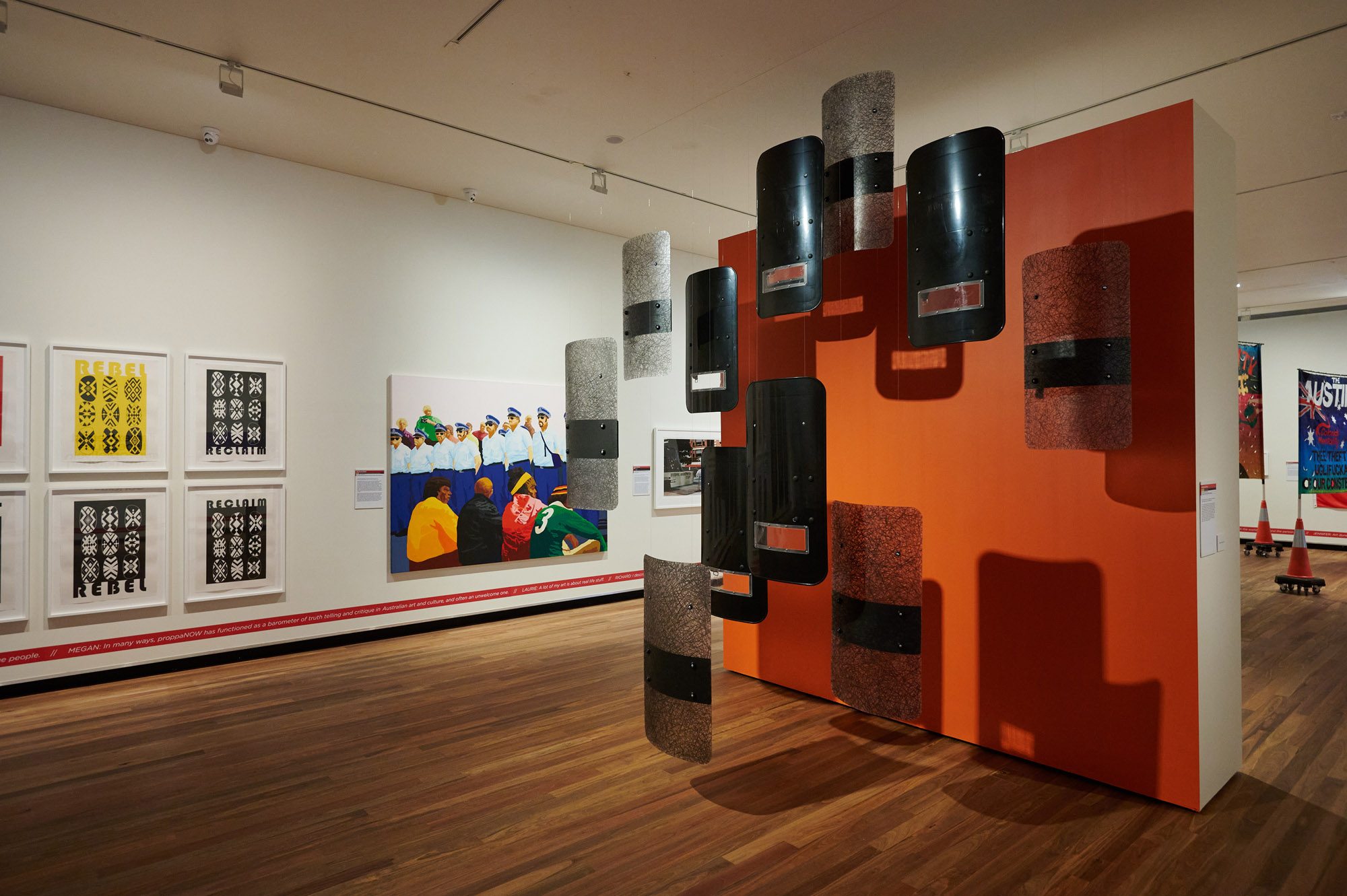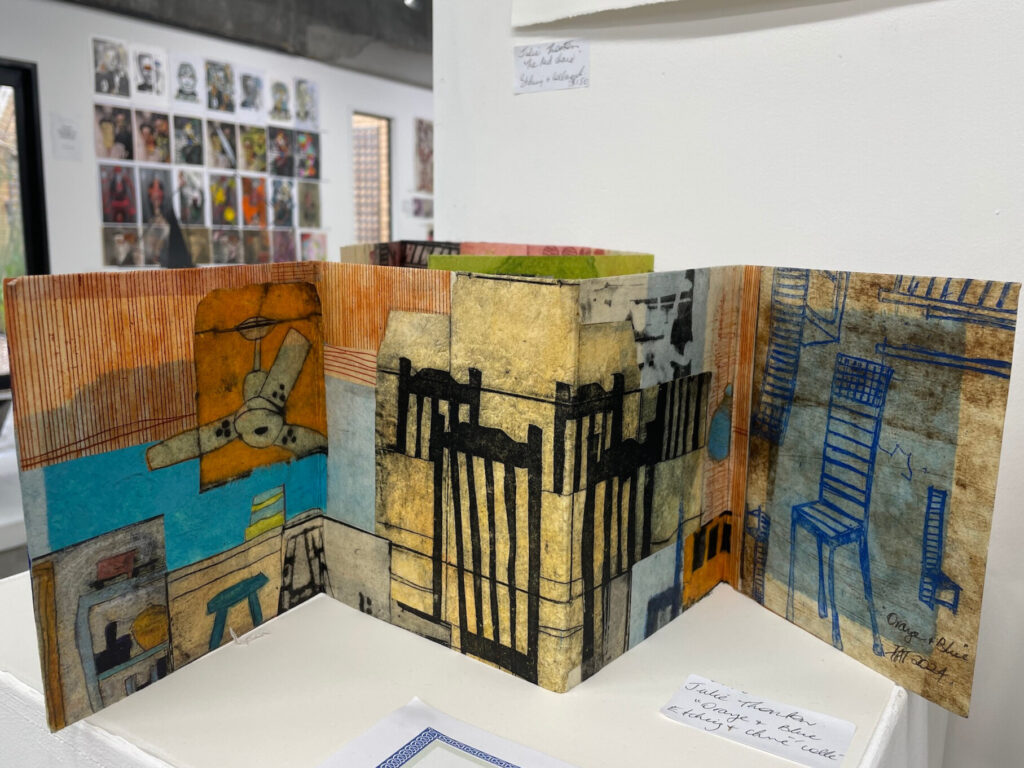
The volume of works at the Brisbane Institute of Art (BIA) End of Semester Exhibition is overwhelming. This is perhaps an overused description for an inevitable aspect of graduate exhibitions, but one that feels wholly warranted here. Salon hangs fill every available vertical surface, and plinths and jewellery cabinets cluster across the remaining open spaces. Works are grouped by classes, creating a tapestry of diverse styles, techniques, and skill levels. This format reflects the BIA’s ethos as a not-for-profit community arts centre, where inclusivity and learning traditional skills take precedence over the conceptual and research-led foci of university fine art degrees. Operating on both semester and short-course timetables, the BIA offers instruction in a wide range of media, including painting, drawing, printmaking, ceramics and jewellery. Specialised classes such as enamelling, metalwork and book illustration highlight an embrace of traditional crafts and technical skills.
The more traditional approach to studying fine art is particularly evident in the exhibition’s recurring imagery: specific ceramic forms and 2D compositions appear across multiple works by different artists. This repetition fosters a sense of community and highlights the BIA’s commitment to honing practical skills through structured courses. However, I wonder if the exhibition might benefit from more selective curation—showcasing fewer yet more resolved pieces from each artist, in turn allowing greater visibility of individual artworks amidst the collective class’s efforts.
Central to the exhibition are two major awards: the Metcalfe Prize and Wim de Vos Prize for Printmaking, judged this year by Australian artists Tony Rice and Geoff Thompson respectively.
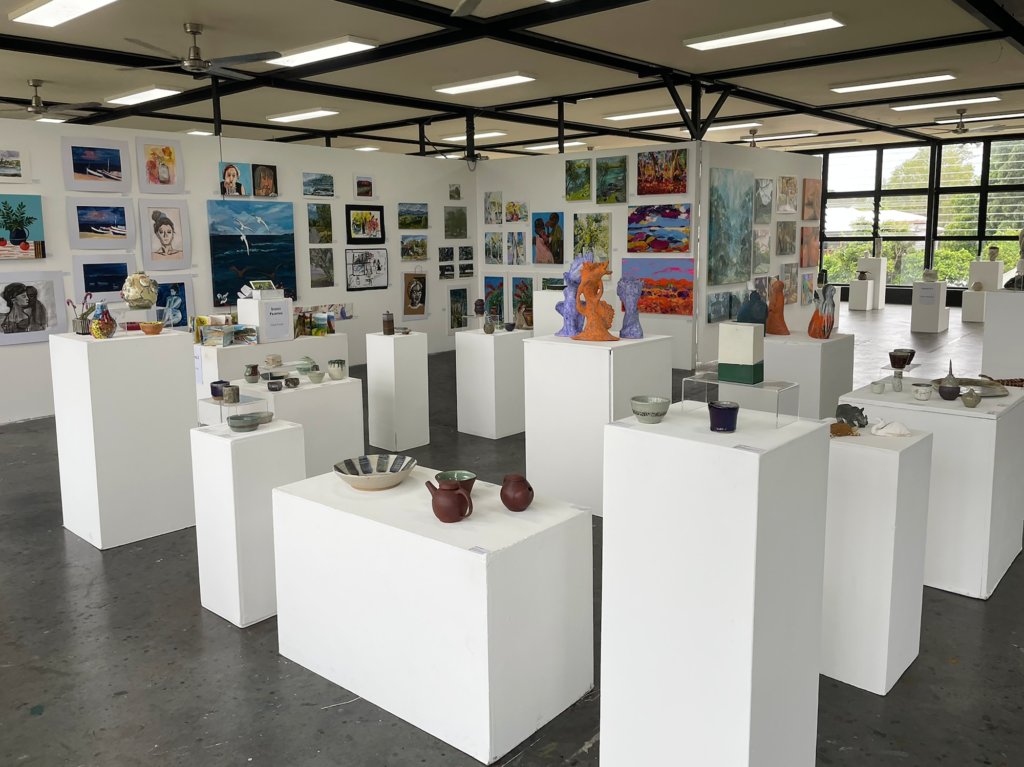
The 2024 Metcalfe Prize was awarded to Cassandra Hurley for Memory Box, a miniature ceramic lidded box decorated with fine black stripes and geological protrusions that break the otherwise flawless surfaces. At first glance, the work is unassuming, but its subtle complexity becomes evident on closer inspection. Hurley employs nerikomi, a Japanese pottery technique involving stacking and cutting layers of coloured clays to create patterns. The precision required to achieve the fine lines in Memory Box is remarkable. Hurley has several equally impressive works in the show, including the intriguing, coral-like Tulipiere Vase, and a black pinch pot subtly patterned by using sawdust firing and masking. Across these works, Hurley strikes a balance between technical mastery and artistic expression.
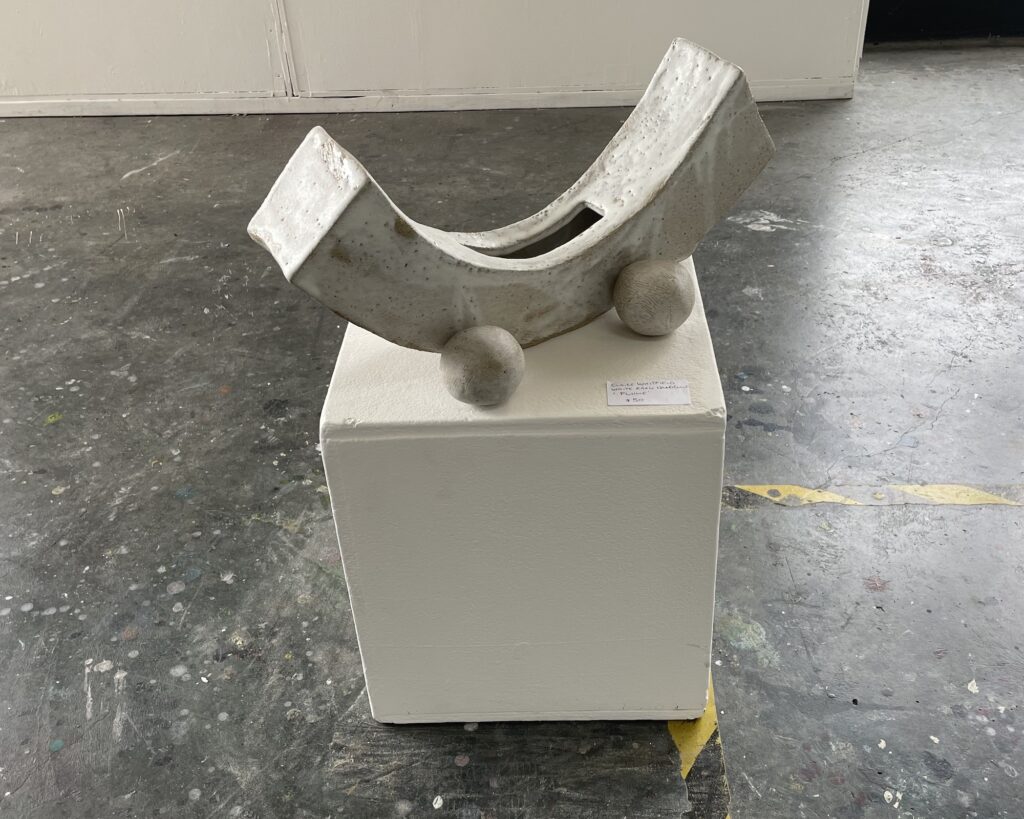
It is fitting that the top prize went to a ceramic artist, in an exhibition that prioritises technique and medium-specific experimentation. Ceramics dominate the space with a noticeable consistency of quality and a contemporary feel, well suited to the industrial workshop setting of the BIA. Other notable pieces include Belinda Krumm’s Eroded Vessel, Yoshiko McGregor’s The Bird Family, and Claire Whitfield’s Flume.
The Wim de Vos Prize for Printmaking went to Julie Thornton for a pair of concertina artist books. These layered etching and chine-collé works depict interior objects—chairs, fans, Venetian blinds—gradually dissolving into abstract forms. Thornton demonstrates an intuitive grasp of printmaking, transforming forms and mark-making into poetic compositions, rich with echoes and shadows unique to the medium.
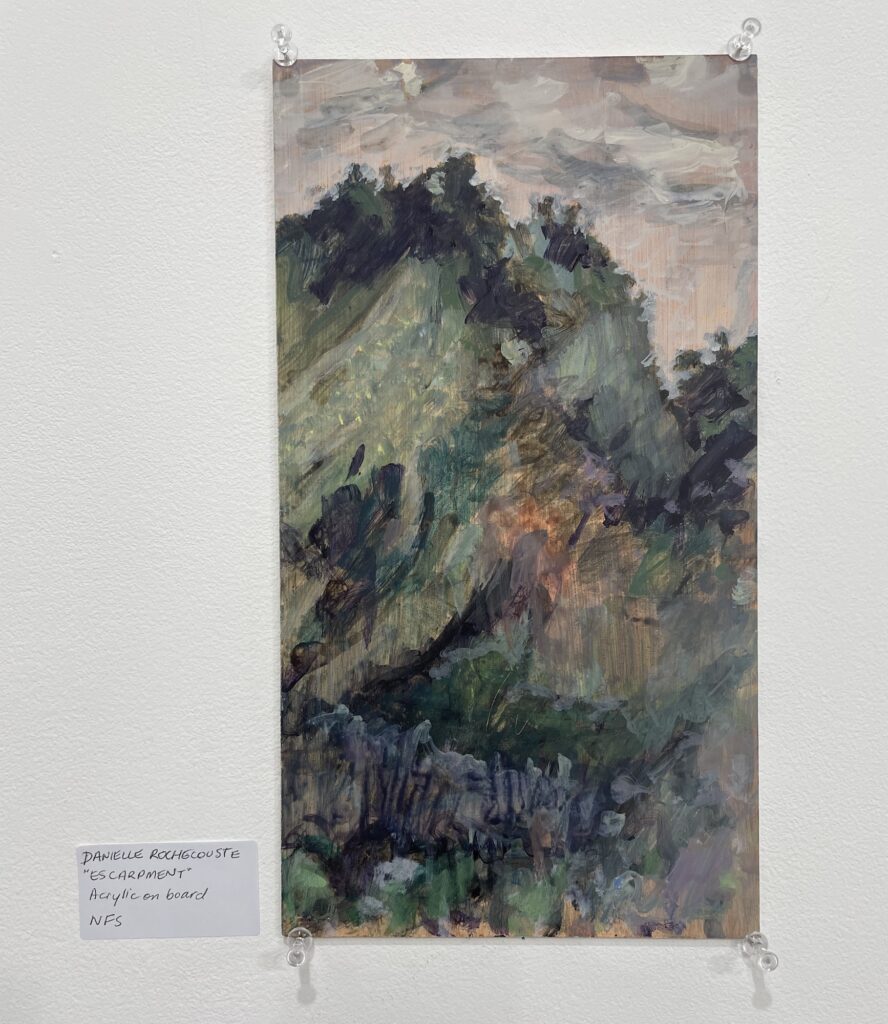
Among the hundreds of works on display, a few stood out for their originality. The metalwork section was an unexpected strength, offering impressive sculptural objects crafted from found and welded materials. Arthur Poropat’s Ironic Garden is a personal favourite—an installation displayed on a low plinth; made from old shovels, rocks, and rusty chains; fashioned into a clever arrangement of oversized botanical forms. In painting and watercolours, landscape studies by Kate Wilson, June Powell, Danielle Rochecouste, and Melissa Bull bring a contemporary, individual approach to traditional subjects, demonstrating a confident command of their respective media.
Across the exhibition, the included works were personal, but not in the introspective vein expected from graduate exhibitions. Instead, they were joyful, quietly celebrating everyday moments through studies of ordinary scenes, imbued with warmth and sincerity. The exhibition may lack the polish of a curated gallery show, but it offered something equally compelling: a commitment to the fine arts, a honing of technical skill, and a heartfelt celebration of collective learning and growth.
Expanded Lemonade coverage of 2024 graduate exhibitions is kindly made possible by Lemonade’s Patreons — including our newest Patreons Andrea Crosser, D Harding, Rosemary Tamas-Cao, and Patricia Olazo — as well as generous contributions from anonymous, Ruth Grieg, Leanne Kelly, Sandy Lidgett, and Charmaine Lyons. A special thank you to Merilyn and Stephen Mayhew for sponsoring a full Grad Show review.
Lizzie Riek is an arts worker and emerging writer.

